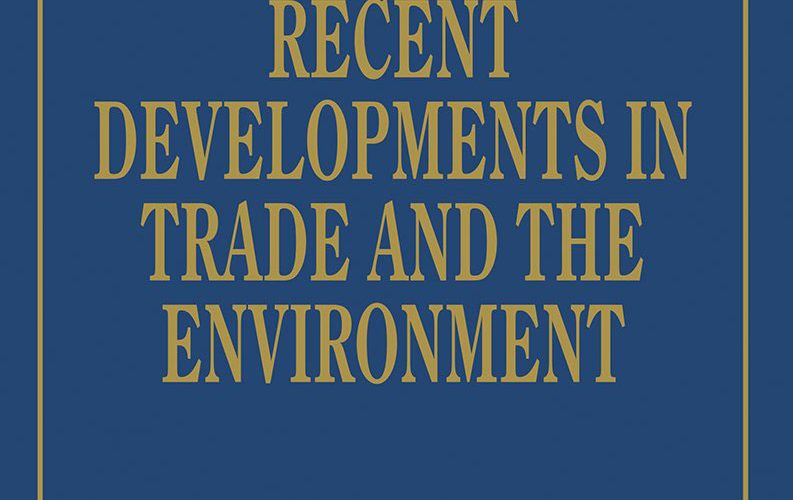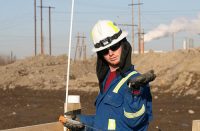Ten minutes now could save you $508.05. That’s the hallucinatory price tag on Amazon for a volume enticingly titled Recent Developments in Trade and the Environment. Its 869 pages – many printed in eye-straining small type – anthologize 33 post-turn-of-the-21st-century scholarly papers on one of the most divisive subjects in progressive policy circles.
For many in those circles, it’s an article of faith that neoliberalized free trade is a threat to the environment, both directly through the activities it promotes and in its presumed chilling effect on countries’ ability to enact environmental regulation. Trade’s promoters make the counter case that it promotes the dispersion of green technologies, while the economic development it encourages pushes countries over the hump of a theoretical “Kuznets Curve,” according to which people at first accept greater pollution in exchange for wealth, but as they become richer beyond a certain point begin to demand a cleaner environment.
Let me save you some money. As the weight of this tome might suggest, simple answers elude it. The subject is fraught with complexity and feedback effects. The papers that University of British Columbia economics professor Brian Copeland has selected for inclusion only occasionally examine empirical cases; they more often rest on the sort of thought experiment that have brought his discipline criticism for reaching conclusions prefigured by assumed conditions seldom seen in the real world.
Trade optimists will find as much to celebrate – or deplore – here as trade pessimists.
Nonetheless, there are some surprises here, as well as new insights into several of the most contentious subjects in the trade-versus-environment debate: the so-called “race to the bottom” and “pollution haven” effects, as well as climate change. Overall, trade optimists will find as much to celebrate – or deplore – here as trade pessimists.
Relying on modeling, Copeland and two co-authors find in the book’s first paper that at an aggregate level, “an increase in openness tends to reduce pollution.” But a host of devils lurk in that sunny overview, as the papers that follow make clear. Typically, outcomes are ambivalent when they are not ambiguous.
Consider what happened when NAFTA made it possible for American-owned used cars to be sold in Mexico for the first time. The cars that left America tended to be the most polluting on its roads with the result that US auto-fleet emissions declined. However the same cars were on average cleaner than those in the pre-existing Mexican fleet so its emissions intensity also fell. Unhappily, the large increase in autos on the road in Mexico meant that auto-fleet emissions for the two countries increased overall.
It’s impressive that polluting emissions from US factories fell by 25 per cent between 1987 and 2001. It’s more so that it happened while those same factories increased their output by almost as much. What’s perhaps more startling is that imports have also “been getting cleaner over time.”
Those results call into question an assumption common among critics that trade invites a “race to the bottom” – the competitive lowering of environmental oversight to attract dirty industry to “pollution haven” countries. Other evidence in this collection suggests a weak or inconsistent effect at most.
Rigorous environmental regulation was a “moderate deterrent” for inbound foreign direct investment (FDI) to the United States, directing it to states with laxer rules.
Researchers found that rigorous environmental regulation was a “moderate deterrent” for inbound foreign direct investment (FDI) to the United States, directing it to states with laxer rules. It may also explain why those US industry sectors facing the highest abatement costs to meet pollution standards also experienced the highest market penetration by Mexican competitors between 1977 and 1986. On average, researchers estimated that higher abatement costs in the US drove 10 percent of its increase in binational trade with Mexico over the decade.
But other evidence is equivocal. Investigators found that differences in the stringency of water regulations in various Chinese provinces mattered to investors from Macau, Hong Kong and Taiwan – but to no one else. Among German overseas investors, “a pollution-haven effect [existed] in the chemical industry but not in other polluting industries.” Researchers who compared differences in the cost of pollution abatement in the United States and costs in Mexico and three other countries, with the distribution of US FDI among those places, found no correlation.
While US environmental regulation tends to be weaker in industrial sectors facing strong competition from imports – suggesting some support for the ‘pollution haven’ idea – another paper finds that import-exposed automakers have more incentive to support high emissions standards than non-exposed automakers. Related research concluded that liberalized trade leads to weaker rules when pollution comes from producing goods – but stronger ones when it’s associated with their consumption (as, for example, with electronic waste).
On climate, the research presented focuses mainly on the problem of “leakage” – greenhouse emissions that occur despite various policies to contain them. Advocates of a unilateral national or NAFTA-scale carbon price who say that an offsetting “carbon tariff” can mitigate the competitive disadvantage it implies for domestic producers against imports from countries without such a price, will find that such taxes don’t do much to plug leakage, but do reduce the welfare of the exporting nation. Meanwhile, the mere anticipation that a carbon price may be established in the future may encourage “inter-temporal leakage,” as producers rush to bring as much fossil energy to market as they can before it kicks in.
So, is more open trade good or bad for the environment? Yes. Or no. It depends. $508.05, please, for all the details.
Reviewer Information
Chris Wood, is an author, speaker and journalist. He first wrote about the environment in the 1970s, winning awards for his coverage of nuclear power and agrochemicals. His most recent book, Down the Drain: How We Are Failing to Protect Our Water Resources (2013), written with Ralph Pentland, details how successive federal governments have neglected Canada’s water and proposes new thinking to instigate change. Wood, his wife and their two bull terriers live in Cuernavaca, Mexico.













